Imagine a world where simplicity speaks louder than extravagance. In the realm of luxury watches, this quiet revolution has been unfolding for decades, captivating those who believe that less is, indeed, more. From Bauhaus-inspired1 designs to modern interpretations of elegance, minimalist timepieces have become a testament to the art of restraint, where each element serves a purpose, and nothing is left to chance.
It began with a deliberate choice—a path that diverged from ornate designs filled with decorative complexity. Minimalism became a philosophy, a vision that valued clarity, balance, and functionality above all else. By removing the superfluous, watchmakers discovered something extraordinary: the pure beauty of clean lines, thoughtful proportions, and harmonious design. It wasn’t just a trend; it was a movement rooted in tradition, one that challenged the status quo and resonated with those who sought refinement through simplicity.
The early whispers of this philosophy were heard in the 20th century with the Bauhaus movement, a force that reshaped art, architecture, and yes, watchmaking. Designers of the time focused on functionality and clarity, crafting timepieces that were as practical as they were elegant. The iconic Movado Museum Watch, with its striking simplicity, and the Junghans Max Bill, a model of utilitarian perfection, became symbols of this new way of thinking. By stripping away unnecessary adornments, these watches amplified what mattered most—precision, legibility, and the craftsmanship behind them.
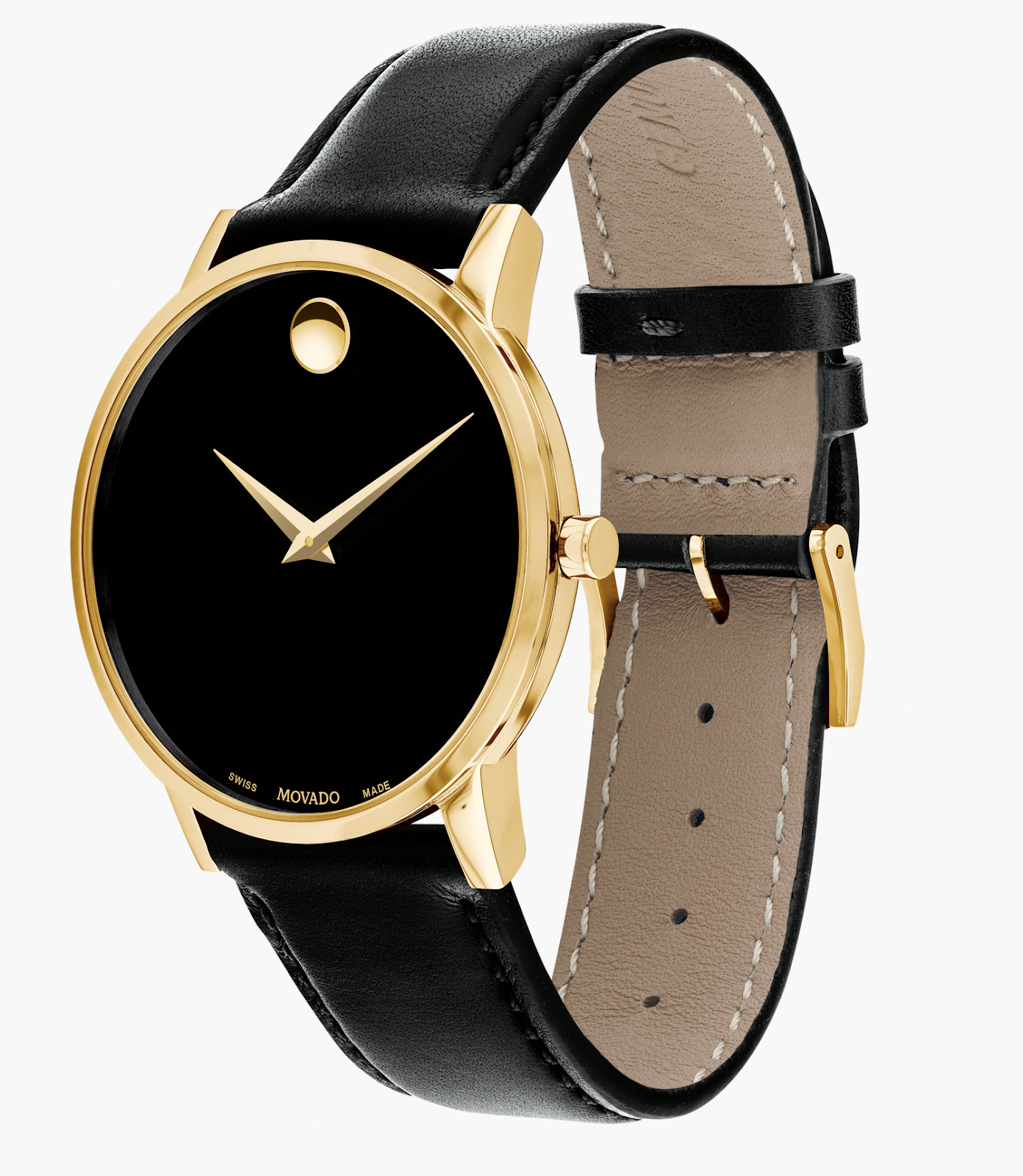
As the years passed, minimalist watches evolved, yet their essence remained unchanged. Today’s minimalist designs are a celebration of purposeful choices, where every element contributes to a greater whole. Dials are clean and uncluttered, with little text or branding to distract from their elegance. Complications are reduced to essentials, ensuring usability without sacrificing style. Even the materials—brushed steel, ceramic, and titanium—are selected with care, offering durability and subtle finishes that add performance without visual excess.
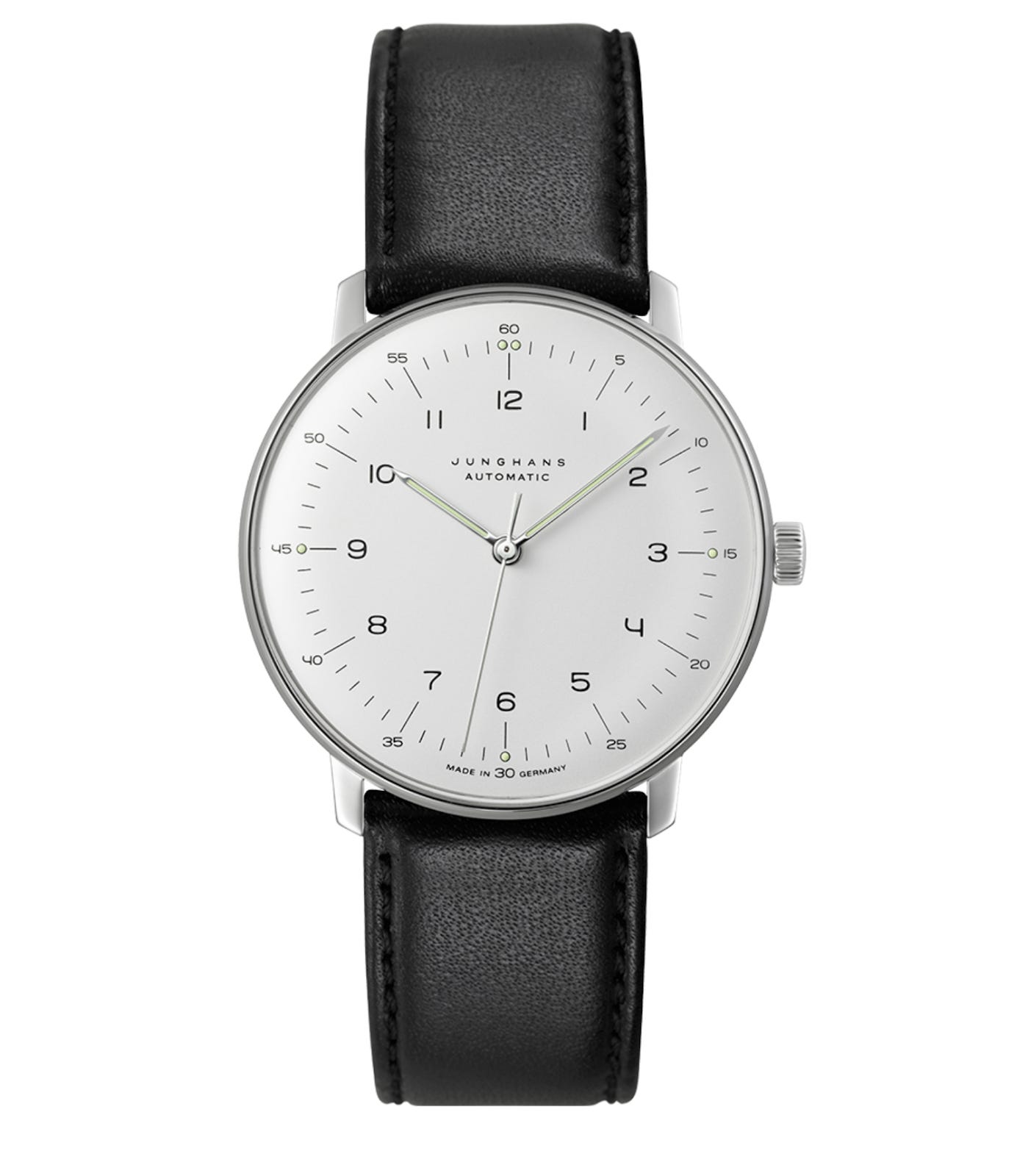
But the soul of a minimalist watch lies in its craftsmanship. Every detail, from the finely textured dials to the perfectly shaped hands and indices, tells a story of meticulous attention and skill. Beneath this understated exterior lies an incredible depth of technical mastery. Ultra-thin calibers, innovative micro-rotors, and discreetly integrated complications reveal the true genius of these timepieces. It is this marriage of precision and simplicity that redefines what a watch can be—not an absence of detail, but a celebration of what is essential.
This philosophy lives on in the creations of brands like Vacheron Constantin, Laurent Ferrier, and H. Moser & Cie., to name a few, whose designs embody the timeless allure of minimalism. Take, for example, the Vacheron Constantin Patrimony, a watch that combines ultra-slim movements with a classic round case, clean dials, and slender indices. It echoes the legacy of earlier minimalist icons but adds a touch of modern sophistication.
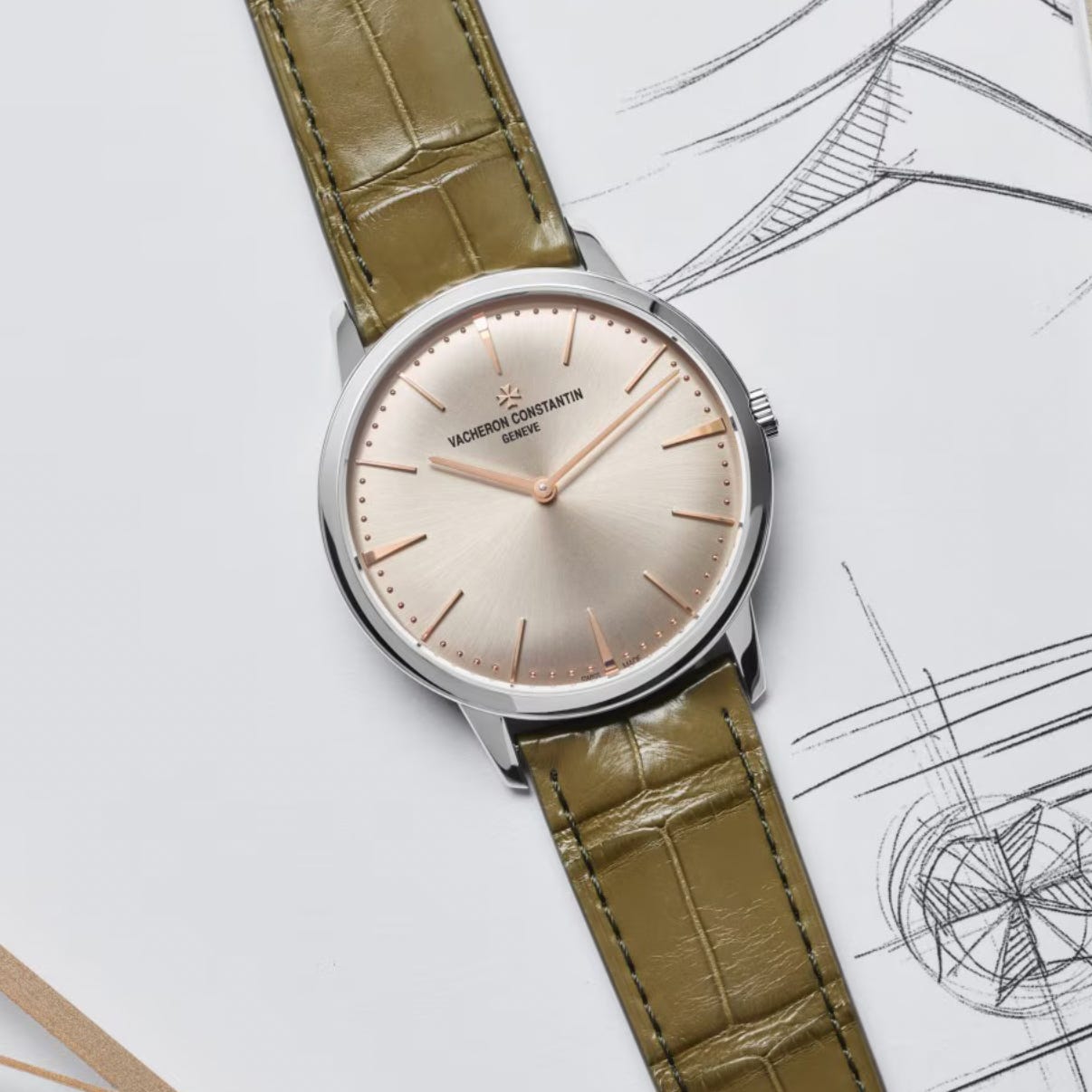
Laurent Ferrier offers another perspective with its Square Micro-Rotor Blue. This timepiece masterfully balances simplicity and complexity, blending shapes like the cushion-shaped case and the round seconds subdial, while its Assegai-shaped hands and polished finish lend it a quiet elegance. Then there is the Endeavour Perpetual Calendar by H. Moser & Cie., a watch that reimagines one of the most complex complications with astounding clarity. Its near-blank dial hides a wealth of functionality, using a small central hand to indicate the month (e.g., 1 o’clock for January, 2 o’clock for February, and so on) and a date window at 3 o’clock, while the leap year indicator discreetly resides on the movement side.
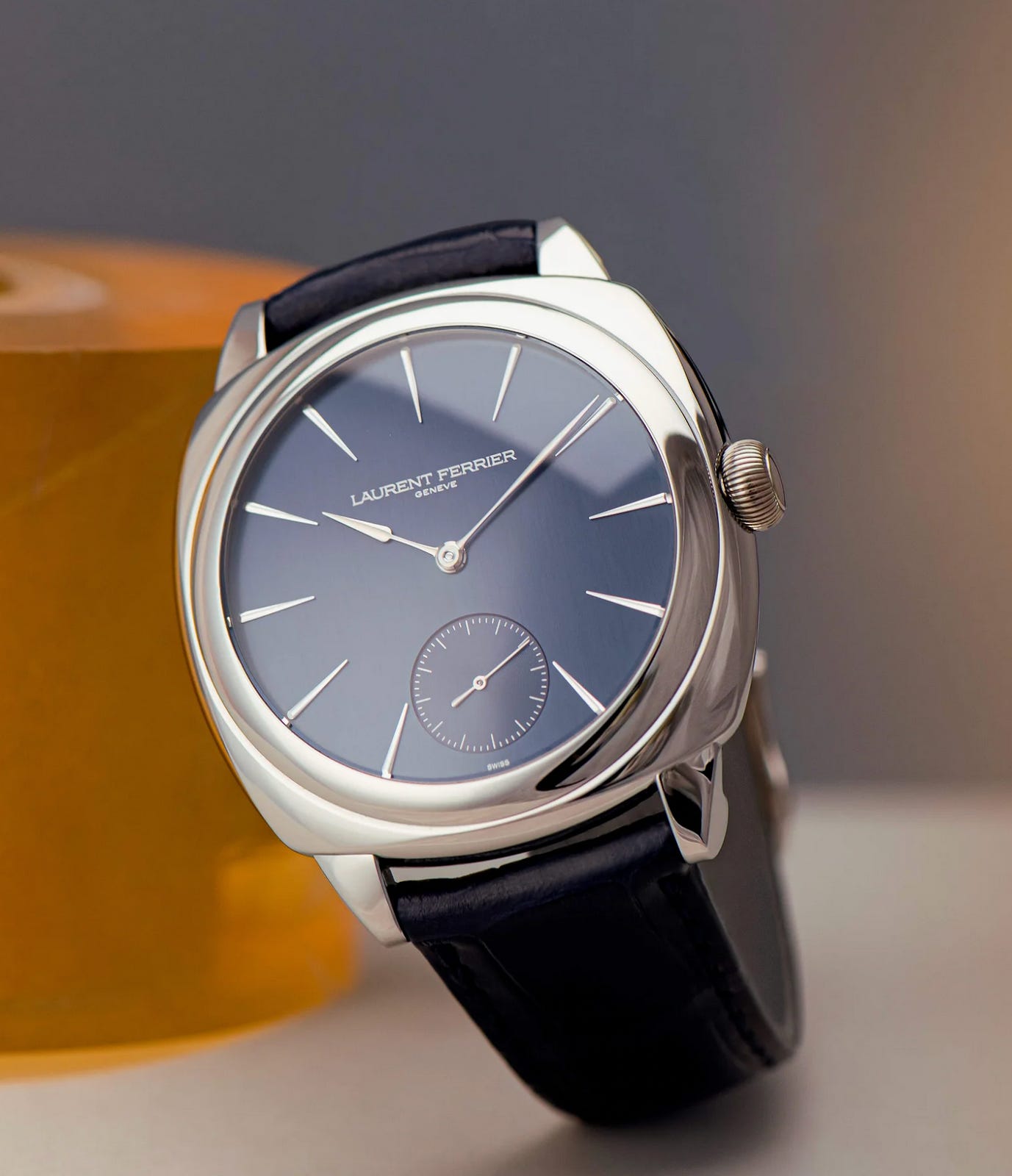
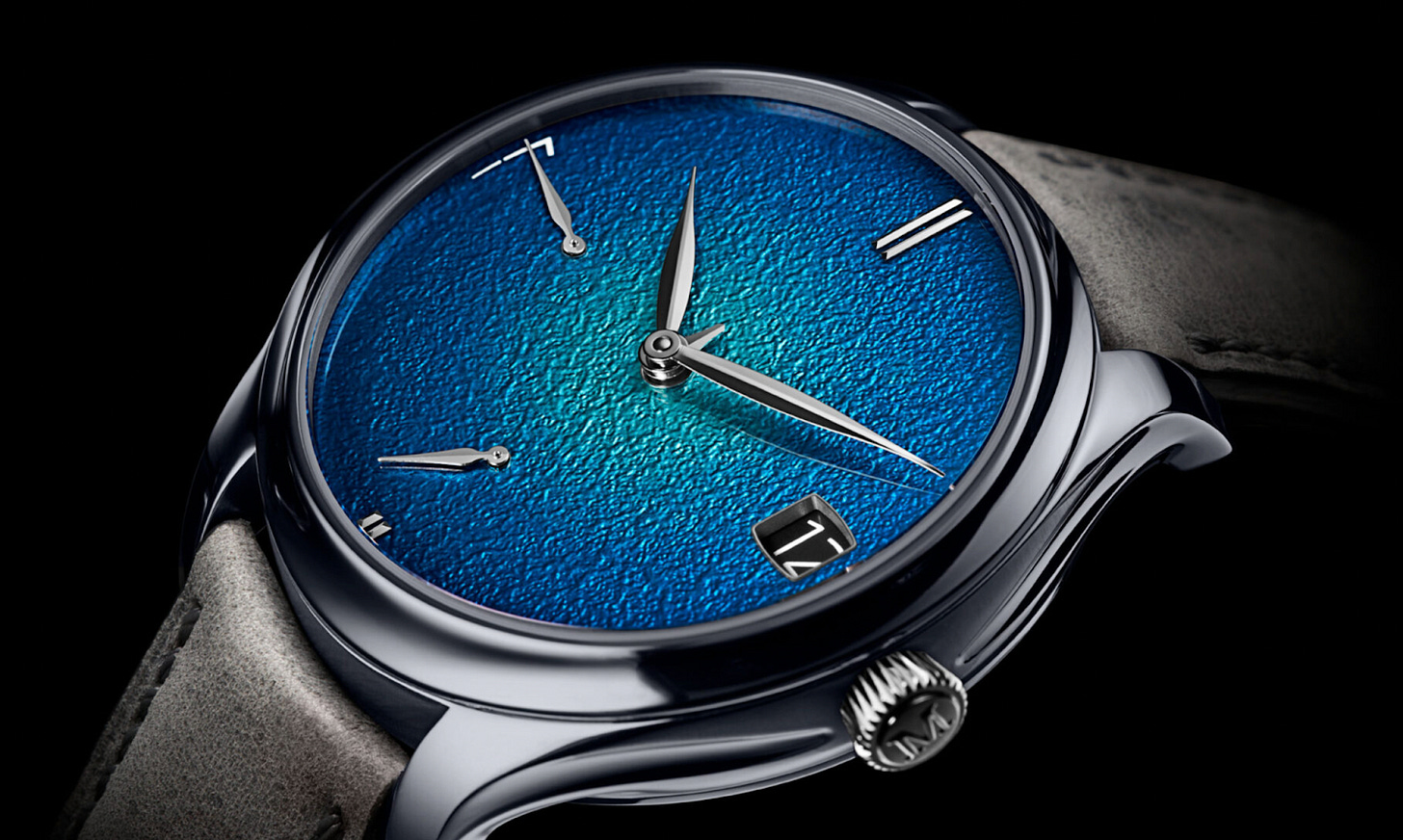
These watches are not just instruments for telling time—they are statements. They strip away excess to reveal the heart of watchmaking, proving that simplicity can be as compelling as opulence. Yet, this approach is not without its challenges. Minimalist design, if not executed with care, risks eroding the identity of a brand. Without distinctive features, a watch can lose its connection to its heritage–its brand DNA–making it harder to stand out in a sea of competitors. For collectors, the lack of intricate details can sometimes feel impersonal, diminishing the emotional resonance that makes luxury watches so special.
The growing popularity of minimalism has also led to market saturation, with more brands adopting these clean designs. In this crowded space, only those who innovate and refine their craft can truly shine. It’s a delicate balance—paring down a design while retaining the character and soul that make it unique.
Despite these challenges, minimalism endures as a beacon of elegance in the watchmaking world. It offers an alternative to the ornate and complex, focusing instead on clarity, balance, and purpose. For those who value these principles, minimalist watches are not just an aesthetic choice—they are a philosophy, a way of celebrating the beauty of restraint.
*****
The Bauhaus Movement was a revolutionary design and art movement that originated in Germany in 1919 with the founding of the Bauhaus School by Walter Gropius. It combined art, craft, and technology with a focus on functional, minimalist, and geometric design principles.


